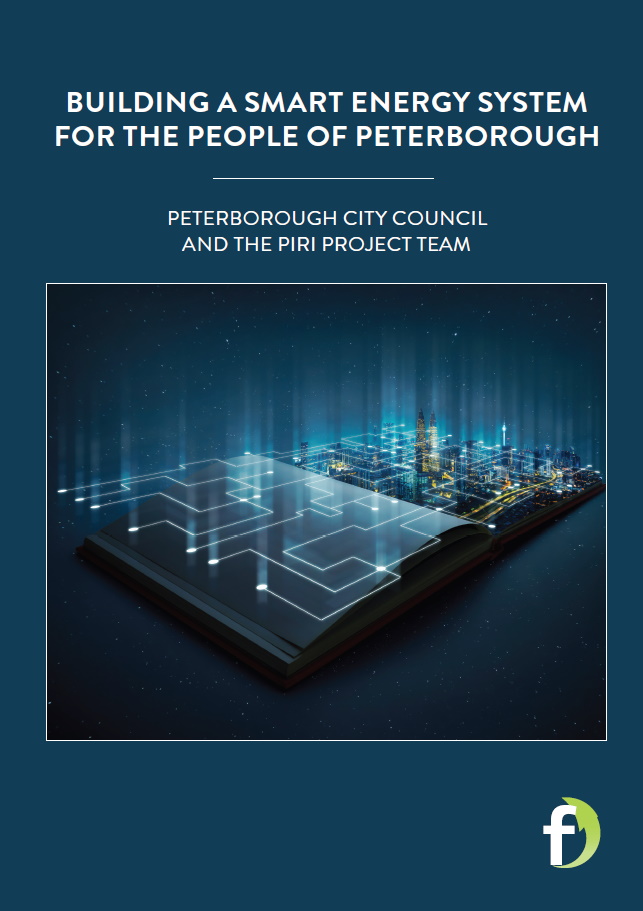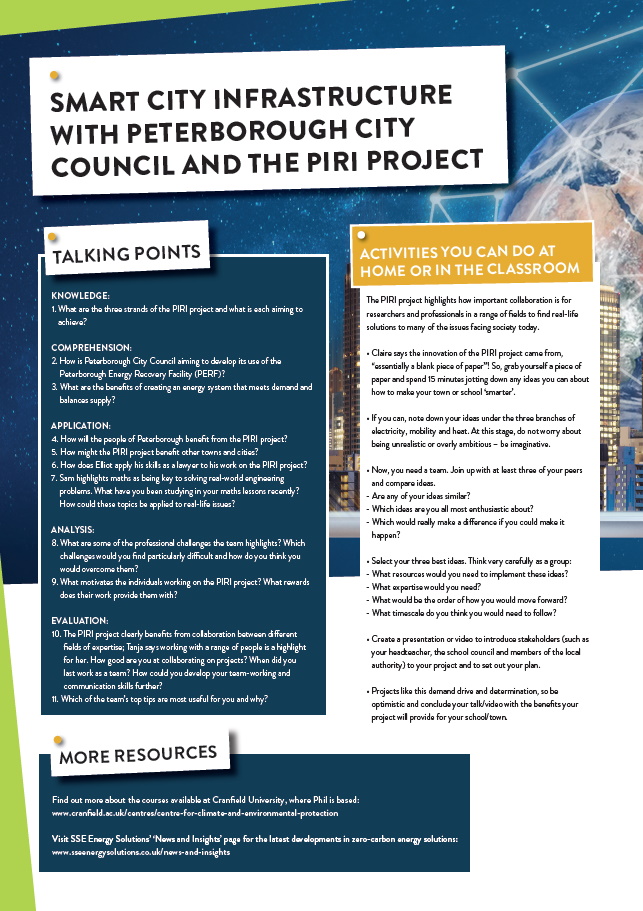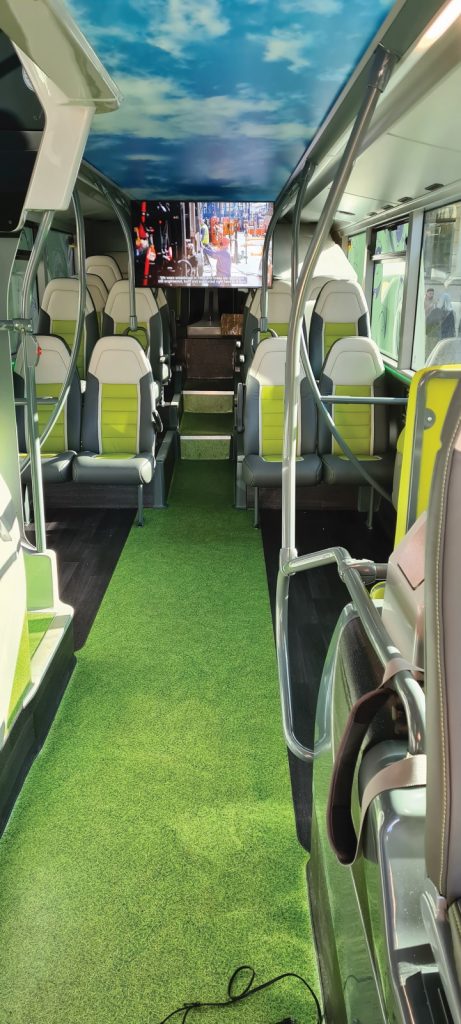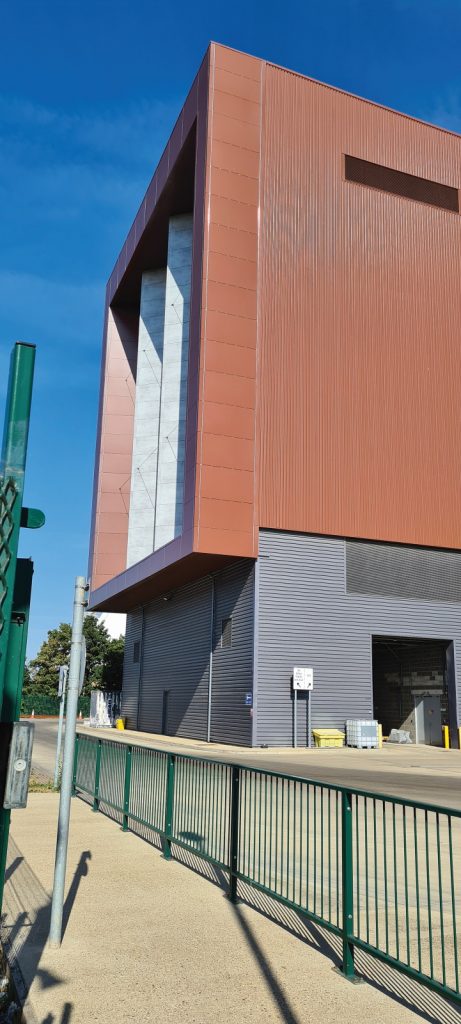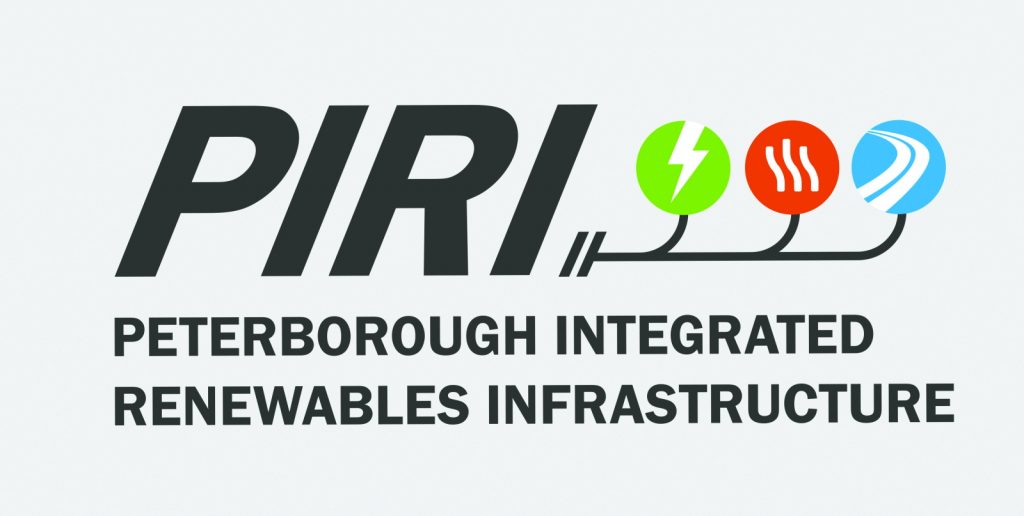Building a smart energy system for the people of Peterborough
Led by Peterborough City Council, in the UK, the Piri Project will deliver energy for the Peterborough community through an integrated renewable energy system that could be a blueprint for other cities in the UK and beyond
KEY TERMINOLOGY
ANAEROBIC DIGESTION – the process of bacteria breaking down biodegradable material
ENERGY CONSULTANCY – a company that advises clients on their energy consumption
ENERGY FROM WASTE – the process of generating energy in the form of electricity and/ or heat from the primary treatment of waste, or the processing of waste into a fuel source
HEAT NETWORK – a distribution system of insulated pipes that takes heat from a central source and delivers it to a number of domestic or non-domestic buildings
INFRASTRUCTURE – the systems, facilities and structure that enable a town or city to run (such as transport and roads, water and sewage, and electricity networks)
LOW-CARBON ENERGY – energy that produces very little carbon dioxide, such as wind, solar, hydro or nuclear power
PHOTOVOLTAIC (PV) – the conversion of light into electricity
RENEWABLE ENERGY – energy that comes from natural sources or processes that are constantly replenished
SMART CITIES – cities that use technology to optimise city functions, promote economic growth and improve the quality of life for citizens
SOLAR THERMAL PANELS (STP) – panels used to collect and convert solar energy into heat
In our current age of the climate crisis, there are many challenges facing society; it can be all too easy to dwell on the problems and forget the incredible innovation that many people are working hard to develop. There is no escaping that our modern lives demand a huge amount of energy, and that energy needs to be affordable and sustainable. We need to be ‘smart’ about where we get our energy from and how we use it.
Creative thinking and ambitious collaboration are providing the solutions we need. There are many ways to generate energy, keep prices manageable and ensure that the negative impacts of energy consumption on the environment are minimised, which is where the innovative Peterborough Integrated Renewables Infrastructure (PIRI) project is leading the way.
INTRODUCING PIRI
The PIRI project is an exciting initiative that aims to deliver low-cost and low-carbon-emission energy for the Peterborough community. It is composed of six collaborative partners: Peterborough City Council, which manages and understands the future of the city; Cranfield University, which develops and shares scientific and engineering knowledge; SSE Enterprise, a major energy producer and supplier; Element Energy, a specialist energy consultancy with expertise in energy system analysis and design; Sweco, a large specialist energy consultancy with international expertise in heat network development; and Smart Grid Solutions, a specialist software and energy system management company.
Professor Phil Longhurst, based at the Centre for Climate and Environmental Protection at Cranfield University in the UK, tells us more about the project…
WHAT ENERGY SOURCES ARE CURRENTLY AVAILABLE IN PETERBOROUGH AND HOW WILL THEIR USE BE DEVELOPED?
Like all major UK cities, Peterborough is connected to the national gas and electricity grid. However, it also has its own energy-from-waste plant, known as the Peterborough Energy Recovery Facility (PERF). “In the future, Peterborough plans to develop the use of solar thermal panels (STP) for heat, as well as photovoltaic (PV) solar panels for electricity,” explains Phil. “It can also use ground-source heat pumps and anaerobic digestion for gas energy.”
The fact that Peterborough already has its own PERF, as well as a city centre and surrounding industries nearby that can supply and use heat and electricity on a nearby grid, makes it a particularly suitable location for a ‘smart energy system’.
HOW IS THE PROJECT BEING INITIATED?
Phil and the team are beginning by looking at larger energy consumers. The aim of this is to collect data from companies that can be used and analysed to shape the future direction of the project. “We are collecting data on how much electrical and heat energy is needed for each large firm in the city, as well as the energy that can be produced by these industries, in particular heat,” says Phil. “Many industrial processes produce heat which is not used and lost to the atmosphere. Indeed, this is currently the case for PERF which could heat a hot water grid for part of the city.”
HOW WILL SMART ENERGY MANAGEMENT BE USED TO MEET DEMAND AND BALANCE SUPPLY IN THE CITY?
Heat energy can be stored using hot water and large insulated tanks. This can be heated when demand is low and released onto the hot-water grid when demand increases. While electricity is more difficult to store, it can be supplied to the national grid for other UK users to access at night when demand is low. Alternatively, local users can be encouraged to use electricity at night – for example, for industry or charging vehicles – when demand is low.
HOW WILL PIRI REDUCE THE AMOUNT OF CARBON BEING USED TO GENERATE ENERGY?
One of the most crucial elements of PIRI is balancing supply and demand, so there is a reduction in demand for fossil fuels by creating a grid that helps strike this balance – particularly during the day. Heat energy is a major cause of fossil fuel demand for the UK, so changing the times at which this form of energy is used will redress the problem. By designing a city-wide grid, new forms of energy can be connected, such as solar PV and STP from local premises, as well as new sources, such as using heat from the River Nene, wind power, or even anaerobic digestion to produce flammable gas from organic wastes, such as sewage.
WILL PIRI HAVE AN IMPACT ON THE LIFE OF THE AVERAGE PETERBOROUGH CITIZEN?
Yes! PIRI should reduce energy costs for users. “PIRI will allow energy users and suppliers in the community to benefit by supplying excess energy, as well as requesting energy from the local grid,” explains Phil. “The electricity grid will also be connected to the national electricity grid to help balance supply and demand. This facility could also encourage new industries and jobs to be created from lower cost and more reliable energy supplies.”
PETERBOROUGH CITY COUNCIL AND THE PIRI PROJECT TEAM
FIELD OF RESEARCH: Smart City Infrastructure
RESEARCH PROJECT: The Peterborough Integrated Renewables Infrastructure (PIRI) project: delivering ‘clean’ energy for the Peterborough community and providing a blueprint for other cities in the UK and beyond
FUNDERS: This project is part-funded by Innovate UK under the Prospering From the Energy Revolution (PFER) programme
Reference
https://doi.org/10.33424/FUTURUM208
ANAEROBIC DIGESTION – the process of bacteria breaking down biodegradable material
ENERGY CONSULTANCY – a company that advises clients on their energy consumption
ENERGY FROM WASTE – the process of generating energy in the form of electricity and/ or heat from the primary treatment of waste, or the processing of waste into a fuel source
HEAT NETWORK – a distribution system of insulated pipes that takes heat from a central source and delivers it to a number of domestic or non-domestic buildings
INFRASTRUCTURE – the systems, facilities and structure that enable a town or city to run (such as transport and roads, water and sewage, and electricity networks)
LOW-CARBON ENERGY – energy that produces very little carbon dioxide, such as wind, solar, hydro or nuclear power
PHOTOVOLTAIC (PV) – the conversion of light into electricity
RENEWABLE ENERGY – energy that comes from natural sources or processes that are constantly replenished
SMART CITIES – cities that use technology to optimise city functions, promote economic growth and improve the quality of life for citizens
SOLAR THERMAL PANELS (STP) – panels used to collect and convert solar energy into heat
In our current age of the climate crisis, there are many challenges facing society; it can be all too easy to dwell on the problems and forget the incredible innovation that many people are working hard to develop. There is no escaping that our modern lives demand a huge amount of energy, and that energy needs to be affordable and sustainable. We need to be ‘smart’ about where we get our energy from and how we use it.
Creative thinking and ambitious collaboration are providing the solutions we need. There are many ways to generate energy, keep prices manageable and ensure that the negative impacts of energy consumption on the environment are minimised, which is where the innovative Peterborough Integrated Renewables Infrastructure (PIRI) project is leading the way.
INTRODUCING PIRI
The PIRI project is an exciting initiative that aims to deliver low-cost and low-carbon-emission energy for the Peterborough community. It is composed of six collaborative partners: Peterborough City Council, which manages and understands the future of the city; Cranfield University, which develops and shares scientific and engineering knowledge; SSE Enterprise, a major energy producer and supplier; Element Energy, a specialist energy consultancy with expertise in energy system analysis and design; Sweco, a large specialist energy consultancy with international expertise in heat network development; and Smart Grid Solutions, a specialist software and energy system management company.
Professor Phil Longhurst, based at the Centre for Climate and Environmental Protection at Cranfield University in the UK, tells us more about the project…
WHAT ENERGY SOURCES ARE CURRENTLY AVAILABLE IN PETERBOROUGH AND HOW WILL THEIR USE BE DEVELOPED?
Like all major UK cities, Peterborough is connected to the national gas and electricity grid. However, it also has its own energy-from-waste plant, known as the Peterborough Energy Recovery Facility (PERF). “In the future, Peterborough plans to develop the use of solar thermal panels (STP) for heat, as well as photovoltaic (PV) solar panels for electricity,” explains Phil. “It can also use ground-source heat pumps and anaerobic digestion for gas energy.”
The fact that Peterborough already has its own PERF, as well as a city centre and surrounding industries nearby that can supply and use heat and electricity on a nearby grid, makes it a particularly suitable location for a ‘smart energy system’.
HOW IS THE PROJECT BEING INITIATED?
Phil and the team are beginning by looking at larger energy consumers. The aim of this is to collect data from companies that can be used and analysed to shape the future direction of the project. “We are collecting data on how much electrical and heat energy is needed for each large firm in the city, as well as the energy that can be produced by these industries, in particular heat,” says Phil. “Many industrial processes produce heat which is not used and lost to the atmosphere. Indeed, this is currently the case for PERF which could heat a hot water grid for part of the city.”
HOW WILL SMART ENERGY MANAGEMENT BE USED TO MEET DEMAND AND BALANCE SUPPLY IN THE CITY?
Heat energy can be stored using hot water and large insulated tanks. This can be heated when demand is low and released onto the hot-water grid when demand increases. While electricity is more difficult to store, it can be supplied to the national grid for other UK users to access at night when demand is low. Alternatively, local users can be encouraged to use electricity at night – for example, for industry or charging vehicles – when demand is low.
HOW WILL PIRI REDUCE THE AMOUNT OF CARBON BEING USED TO GENERATE ENERGY?
One of the most crucial elements of PIRI is balancing supply and demand, so there is a reduction in demand for fossil fuels by creating a grid that helps strike this balance – particularly during the day. Heat energy is a major cause of fossil fuel demand for the UK, so changing the times at which this form of energy is used will redress the problem. By designing a city-wide grid, new forms of energy can be connected, such as solar PV and STP from local premises, as well as new sources, such as using heat from the River Nene, wind power, or even anaerobic digestion to produce flammable gas from organic wastes, such as sewage.
WILL PIRI HAVE AN IMPACT ON THE LIFE OF THE AVERAGE PETERBOROUGH CITIZEN?
Yes! PIRI should reduce energy costs for users. “PIRI will allow energy users and suppliers in the community to benefit by supplying excess energy, as well as requesting energy from the local grid,” explains Phil. “The electricity grid will also be connected to the national electricity grid to help balance supply and demand. This facility could also encourage new industries and jobs to be created from lower cost and more reliable energy supplies.”
PETERBOROUGH CITY COUNCIL AND THE PIRI PROJECT TEAM
FIELD OF RESEARCH: Smart City Infrastructure
RESEARCH PROJECT: The Peterborough Integrated Renewables Infrastructure (PIRI) project: delivering ‘clean’ energy for the Peterborough community and providing a blueprint for other cities in the UK and beyond
FUNDERS: This project is part-funded by Innovate UK under the Prospering From the Energy Revolution (PFER) programme
THE THREE STRANDS
THE PIRI PROJECT IS FOCUSED ON THE THREE AREAS OF ELECTRICITY, HEAT AND MOBILITY. WHILE THE STRANDS ARE RELATED, MAKING THEM DISTINCT ENABLES THE TEAM TO FOCUS ON WHAT EACH AREA REQUIRES TO BE SUSTAINABLE.
ELECTRICITY
Creating a local electricity network reduces the strain on the national grid and enables the system to meet local demand with local production. The team is collecting data from energy users and analysing it to understand current and future demand for electricity.
From here, it is hoped that current supplies can be assessed and new opportunities for supply can be created. Without affordable energy, businesses can close and households go cold. There are a huge number of benefits that the PIRI project can facilitate through a local electricity network.
HEAT
The Peterborough Energy Recovery Facility (PERF) is already demonstrating how heat loss can be minimised. It is worth acknowledging that some heat loss is essential for the system to work efficiently (in a similar way that cars have radiators to keep the engine cool) but, long-term, heat and electrical energy will be saved.
This will also have the effect of reducing energy costs and could attract new industries – if Peterborough is at the forefront of clean and efficient energy initiatives, it is likely that businesses will want to set up a base there.
MOBILITY
The creation of a local electricity network will have benefits for mobility, especially in terms of powering electric cars, buses and trains. A local low-carbon infrastructure will help connect Peterborough’s public transport into the wider system, as well as providing charging points for individuals.
We often take transport for granted, but if the energy we use to facilitate transport can be made cleaner, then the benefits could be significant.
PIRI aims to achieve significant carbon reduction, cost savings for consumers and to demonstrate an integrated energy scheme that can be replaced across the UK:
– 8.5km of network by 2030, with the potential to expand to 26km in the 2030s
– 70 Aragon Direct Services vehicles will be electrified by 2025
– 25 Giga Watt hours (GWh) of heat supplied to connected buildings annually by 2030, up to 60GWh by 2035
– 80GWh annual electricity demand identified for connection to low-carbon power network
– 7 Mega Watt peak (MWp) ground-mounted solar PV array installation, servicing buildings and electrical vehicle charging
– 80 – 90% CO2 emissions savings, or up to 200,000 tonnes of CO2 reduced over 40 years
MEET THE PIRI TEAM
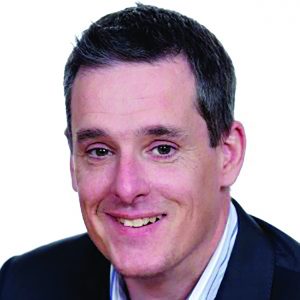
ELLIOT SMITH
COMMERCIAL MANAGER: ENERGY, INFRASTRUCTURE AND REGENERATION AT PETERBOROUGH CITY COUNCIL, UK
As Programme Lead, I am responsible for leading the project and facilitating collaborative decision making, influencing others to agree what needs to be done and how best to do it, developing the culture within which we work, setting the vision and aims and enabling individual and collective efforts to achieve these shared objectives. The role is a strategic approach to the outcomes that we want to achieve from PIRI, but which often becomes quite granular and technical in nature.
There is no typical day as the project is so varied and this is the excitement of PIRI. We may be discussing project management tasks, actions and risk helping to drive the programme forward, then legal and regulatory considerations, and technical issues, with regard to the design, stakeholder engagement, investment and finance. There is a great variety and a steep learning curve.
The key professional challenge is leading a project in an area that can be very technical. This has required a lot of new learning to understand the terminology used, the approaches taken and the underpinning technologies. I am always learning new things, which again adds to the excitement of working on a project like PIRI. I am working with people who are highly skilled in their areas, who take the time to explain complex information. For me, this is invaluable and whilst I may not understand every aspect of the scheme in the level of detail that they do, I have developed enough knowledge to be able to contribute to discussions and make decisions.
There have been many highlights, but overall is observing and being involved in the development of the project. There have been many ups and downs and various challenges to navigate, but we have overcome them. Overcoming these issues, which at times appear insurmountable, is very rewarding and gives us confidence for the challenges that lie ahead.
I have been interested in the broader concept of ‘smart cities’ and the benefits this can bring for residents and businesses for a number of years. Energy and climate change initiative are a critical part of this. I am a qualified lawyer and although law may seem like a very different subject, my legal skills do translate well into this area of work, specifically analysis and assessment, written and communication skills, risk management, organisation and research.
My immediate ambition is to see PIRI grow to become a successful smart local energy system which benefits the city and helps achieve decarbonisation. I am proud of this project as a whole and what it could become. From initially thinking about how it might work, drawing lines on a plan and developing the consortia to where we are now. It now has been very difficult at times, but the outcomes that we can achieve keeps us all going.
When I was at school, geography wasn’t a particularly interesting or engaging subject. My children are studying geography now and it is completely the opposite! I read through their course books and have discussions with them about all kinds of things, from regeneration to climate change. Human geography, in particular, is very much relevant to what I am doing.
ELLIOT’S TOP TIPS
Do what you have an interest in, don’t give up, and remain resilient. Be alert to opportunities and take them when they are presented. Put effort in to get rewards out. Remain open minded and take every opportunity to learn new skills and gain new knowledge.

CLAIRE EVANS
PIRI PROJECT MANAGER, SERCO IN PARTNERSHIP WITH PETERBOROUGH CITY COUNCIL
My role as the PIRI Project Manager involves the day-to-day management of the project work, ensuring agreed deliverables are produced and issued in line with the agreed project plan, whilst maintaining governance across all the work packages within the programme.
A typical day for me varies! Some days are busy with meeting after meeting, discussing/progressing different elements of the project. Other days are spent updating/creating/reviewing documentation needed to ensure a successful project.
For me as PM, the rewards have been seeing the innovative project develop into a proposed scheme, from essentially a blank piece of paper (all whilst in lockdowns), and knowing if we can get this project to construction, the impact the blueprint will have, not only on opportunities to improve smart green energy systems in UK but also across the World, will be huge.
I started my PM career working for the National Grid many years ago and have moved and developed my PM skills across other industries since then. I have developed a unique ability to be able to turn my skills to whatever project I am asked to deliver. To be asked to PM PIRI was a very exciting opportunity for me. It’s amazing how much you remember and understand during technical, engineering meetings!
I am very proud to have my name associated with PIRI – regardless of the outcome. I feel the work the team is doing is so unique, that just trying to come up with a scheme with the potential to be rolled out worldwide is a huge achievement. As for career ambitions, who knows where PIRI will take me once it’s completed.
I started my working career after completing an administration course at college, providing administrative support to companies, and worked my way through to become a project manager. Since then, the projects I have managed have grown in size, budget and importance, through ongoing project management training courses. You never stop learning!
Work hard, be prepared for good times and bad times, but use both experiences to improve yourself. Be tenacious, confident, a good communicator and listener. Even if you have a career path in mind now, do not let that dictate to you that that is the career path you have to take – it’s fine if it doesn’t go according to plan. I wanted to be a bank clerk, then a teacher!

DR TANJA GROTH
DIRECTOR OF URBAN RESILIENCE, SWECO UK
Sweco is the largest engineering consultancy in Europe, and for PIRI we act as the technical lead, supporting with the drawings, calculations and design for the upgrades to the electricity and heating networks supplying power and heat to stores and homes in the city centre.
I go to a lot of meetings! There are a lot of people involved in delivering this project, and I am responsible for coordinating the ones involved in the technical design. This means checking that we are asking the right questions and that the answers we are providing solve the questions that our partners are asking. It also means checking that we stay on time for our drawings and calculations and check that we are not missing anything!
This project demands I keep track of details, which can be a challenge. Working on other projects means deadlines can also be a struggle. I have a colleague who supports me (and keeps me on my toes). Also, my colleagues in the partner organisations are great at giving me a nudge!
The mix of people working on this project is a huge highlight for me. We have a great dialogue across the different partnering organisations, especially since most of us have only met once or twice in person due to COVID. Lots of laughs, open discussion and sharing of ideas between us in our meetings (we have a lot on Thursdays, affectionately known as “PIRI Thursday”).
I have mostly worked for non-profits, start-ups and small to medium-sized enterprises (but am now at the largest engineering consultancy in Europe, which is quite a change!) and my background in collaborating across a lot of technical and non-technical companies working with renewable energy and the climate emergency made me a natural fit to working on this project.
There so many achievements I’m proud of. I started my career as an intern working at a non-profit community energy organisation in Denmark, convinced a renewable manufacturing start-up to hire me (I was a non-engineer and it took me a year), got my PhD and have worked for some of the best consultancies in my sector. Working on PIRI is very high on my list of milestones. Being invited by the British High Commission to give a keynote presentation on renewable energy at their annual conference is memorable for me. And, I was asked to write the government methodology for socio-economic valuation of heat and energy efficiency projects for Scotland.
Honestly though, it’s the people I’ve learnt from and have shared learning with over the last 15 years that stand out for me. I love that I’ve had the opportunity to work with some amazing people.
There are two routes into energy economics – one through apprenticeships and one through university. Unfortunately, Sweco does not yet have an apprenticeship scheme for energy economists (since I am the only one in the UK) but other organisations, such as Amber Infrastructure and FTI Consulting, offer this route. The university route is more conventional, but you don’t get a chance to specialise until after your undergraduate degree. I spent 10 years at university to be able to specialise. I am lucky that Danish universities are free!
Learn statistics, the science of negotiation and MS PowerPoint/Excel. The median (similar to average but not quite) age in the UK is over 40 years. What do you think that means for you when you join the labour market? There are upsides and downsides, but the youngest successful colleagues we have are the ones who are good at those things.

SAM BENJAMIN
SENIOR CONSULTANT, ELEMENT ENERGY, LONDON, UK
Element Energy is leading the ‘concept design’ of the PIRI project. This involves coordinating and developing the technical details of the project, and understanding the investment required to make the project happen. We are trying to answer the questions: “Will this project make money, whilst also reducing carbon emissions? What can we do to enhance carbon emission reductions and make the scheme more profitable?”.
I manage the internal Element Energy team, as well as coordinating the wider PIRI project teams, to develop this concept design. I also directly run the financial analysis, to understand whether PIRI is financially viable (i.e. whether it will make or lose money). If it’s not financially viable then PIRI is unlikely to happen, so it’s an important role to play.
The key challenge for PIRI is how we make the project greater than the sum of its parts, as we are trying to integrate several low-carbon energy networks into one system. That requires a lot of joined-up thinking between all project partners, which means I am talking to a lot of different people with different ideas and motivations, so managing that can be challenging. The knowledge that, when built, PIRI will stop a huge amount of carbon dioxide being emitted into the atmosphere (up to 5,000 tonnes per year!) is hugely motivating.
I studied chemical engineering at university, but knew I wanted to use my science/engineering skills to solve the major challenges we face today. I took university modules relating to energy and the environment and followed that path from the start of my career.
I am proud of devising a smart, innovative engineering design that goes beyond what was initially expected. My ambition is to help as many people as possible understand the challenges we face with climate change, and what they can do to combat those challenges.
My advice is: study maths! If you study engineering at university, you will almost certainly study maths. At school, it may not feel like what you are learning in maths classes has meaning, but all the concepts and analysis methods will allow you to solve real-world engineering and technical problems. I promise you that algebra and calculus really are useful in the real world!
If you’re planning on pursuing engineering as a profession, get as much technical/‘on-site’ experience as you can, before or after you begin your career. Whether you’re a consultant, a design engineer or a project manager, understanding engineering systems is key to progressing your career.

PROFESSOR PHIL LONGHURST
CENTRE FOR CLIMATE AND ENVIRONMENTAL PROTECTION, CRANFIELD UNIVERSITY, UK
I lead the work sharing learning outcomes from the project. It is our role to understand the achievements, challenges and outputs and communicate these to different groups that we work with or who will benefit from the Smart Local Energy System (SLES).
The greatest reward from this project is working with energy experts and colleagues with experience of leading large-scale changes in cities. Highlights from our work include the project launch event, press releases and the visit of the SSE bus to Peterborough on its way to COP26.
My career pathway has taken me from the London School of Furniture to my role at the Centre for Climate and Environmental Protection, via a period of teaching Design and Technology. At each stage, I’ve had the benefit of working with experts in their field and been encouraged to discuss and develop ideas, as well as make mistakes and learn from them. Working with materials and designing products made me realise the importance of the complete production system. This led me to understand that learning and teaching is more than ‘instruction’ – it’s about organising experiences for people. Research on climate change has since led me to understand the importance of understanding and explaining low carbon living that are feasible experiences in cities.
Working with enthusiastic experts from all fields of expertise such as economic, social sciences, technology and engineering motivates me hugely. The challenge is always having enough time to develop ideas, whilst delivering work to a tight schedule.
My proudest moments are seeing my students and early career staff being promoted and becoming recognised experts in their own fields. My own ambition is to continue to be part of the most exciting and challenging structural change in the energy sector since we moved from watermills and windmills to electricity, back to the similar energy sources with new designs.
Putting effort into being great at what you enjoy most is key. This gives you confidence and helps you learn skills that are transferable to all subjects. Written communication, languages and maths are always a benefit, but the greatest skill is completing things that are difficult and not giving up.
Follow what interests you and find people in work who share your interests. Don’t be afraid to be different – everyone is.
EXPLORE A CAREER IN SMART ENERGY INFRASTRUCTURE
• Find out about internship and summer placements offered by Sweco.
• Explore the apprenticeship, trainee and graduate programmes and summer placements offered by SSE Enterprise.
• Prospects gives some interesting pointers about careers in energy consultancy.
One of the brilliant things about the PIRI project is that it highlights the range of people who work together to achieve a shared goal. And a range of people always means a huge variety of skills, qualifications and personal attributes.
Having completed a chemistry degree at university before becoming an energy consultant, Sam emphasises the importance of maths, while Claire has developed her career in project management after an administration course at college, and Tanja mentions that her field of energy economics can be entered through apprenticeships or university.
The PIRI team members have also referred to human geography, law, engineering, design technology and languages, but this is by no means a definitive list of subjects that can lead you to a career in smart energy infrastructure. It is vital that you ask yourself where your strengths and passions lie – what do you think you could contribute to a ‘smarter’ future?
Do you have a question for Elliot, Claire, Tanja, Sam or Phil?
Write it in the comments box below and Elliot, Claire, Tanja, Sam or Phil will get back to you. (Remember, researchers are very busy people, so you may have to wait a few days.)

